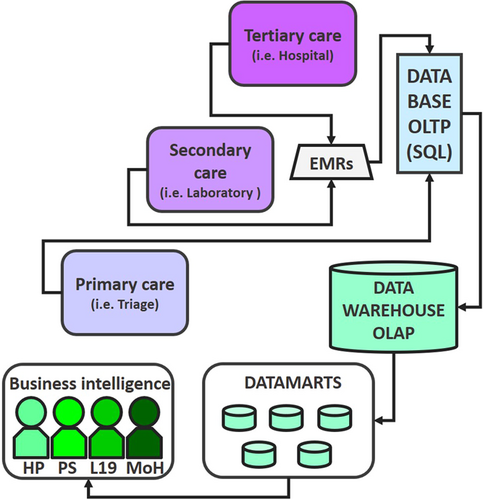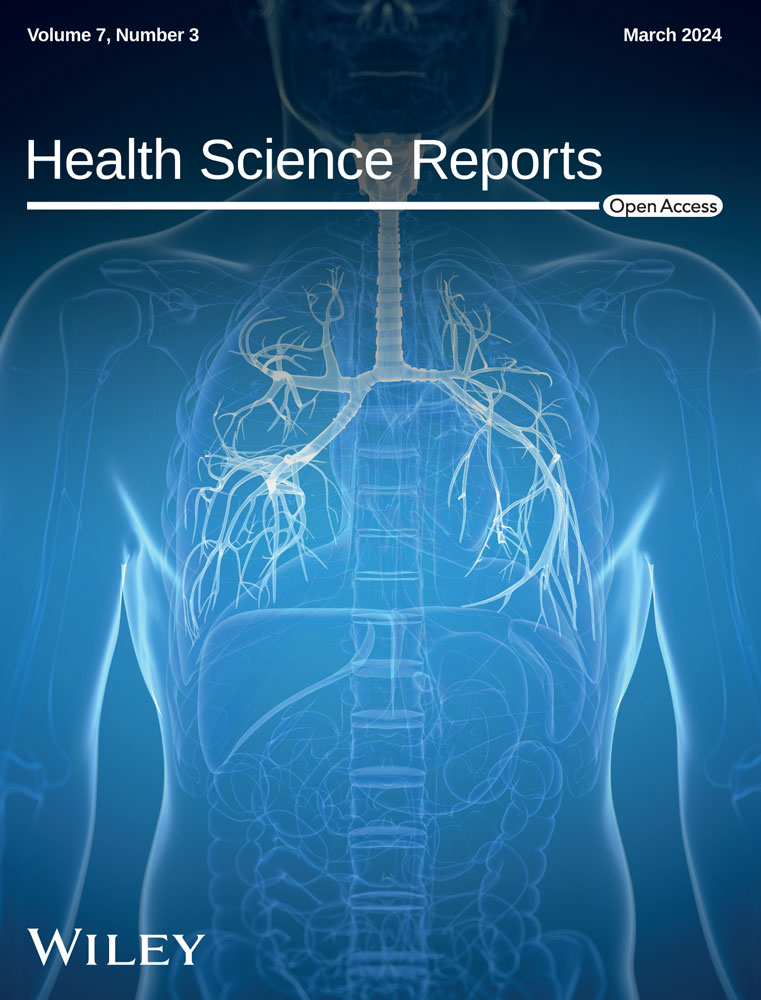How do infectious diseases affect high-performance athletes? Norovirus during the Lima 2019 Pan American Games
Abstract
Background and Aims
The incidence of infectious diseases among athletes during international competitions is a concern for public health. In this study, we aim to report six cases of norovirus-associated gastroenteritis among athletes in Lima 2019 Pan American Games, a multisport event held in Peru.
Results
During the Lima 2019 event, there were no reported outbreaks or cases of most frequent diseases, however, six cases (0.09%) of norovirus-associated gastroenteritis were reported. The clinical stage of the cases was self-limited to 2 days, and the main treatment was fluid replacement. Of the six affected athletes, five came from the United States and one from Chile. Only one karate athlete from the United States, could not continue with the competition due to the illness.
Conclusions
The incidence of norovirus-associated gastroenteritis among athletes in Lima 2019 was low, and the clinical course of the illness was self-limited. We conducted a retrospective analysis of medical records of athletes who presented with gastroenteritis using the Panam Sport In previous sporting events, such as the 2017 World Athletics Championships in London, Injury and Illness Surveillance System. These findings can inform the development of public health strategies for the prevention and control of infectious diseases among athletes during international competitions.
The intense physical training, frequent traveling, and close contact with teammates and competitors make infectious diseases a major concern for high-performance athletes. These diseases not only hinder an athlete's performance but also pose long-term health risks.1 The COVID-19 pandemic has further emphasized the significance of preventing and managing infectious diseases in the sports industry.2
The Lima 2019 Pan American Games (Lima 2019) provided a platform for 6500 athletes from 41 countries in the Americas to showcase their talent in 39 sports and disciplines. This multisport event, held from July 26 to August 11, 2019 in Lima, Peru, offered athletes a chance to compete against some of the best in the region.3 Despite the success of the event, Gallego et al.4 highlighted the potential health hazards posed by infectious diseases during such international and multisport events. Their report underscores the importance of disseminating epidemiological evidence to optimize planning and management processes.
We conducted a review of the database of medical reports during the Lima 2019 Pan American Games. All the information was administred by an electronic system implemented by the Panam Sports Medical Commission.5 The Injury and Illness Surveillance System (SVLE) served as a management information model. This system facilitates resource planning for sporting events and addresses infectious diseases in elite athletes. An attribute of SVLE is its design for recording management processes linked to medical care (injuries and illnesses) while enabling real-time monitoring. However, it falls short in capturing detailed medical histories, which regrettably emerges as the primary limitation of this report.
Although no outbreaks or cases of most of the diseases cited by Gallego et al.4 were reported in Lima 2019, six cases of norovirus-associated gastroenteritis were identified in the database. The diagnosis of these cases required collaboration between the Lima 2019 Medical Committee, the medical area of the US delegation, and official instances of the Peruvian Ministry of Health for epidemiological control and monitoring. The diagnosis was made using both the reaction polymerase chain reaction and Kaplan clinical criteria, as recommended by Patel and Araujo-Castillo6 for the suspicion of norovirus. Additionally, the management reference was taken as reported by the CDC's Guidelines for norovirus.
The clinical stage of these cases lasted for 2 days and the main treatment was fluid replacement. Out of the six affected athletes, five were from the United States and one was from Chile. Only one athlete, from the United States (a karate athlete), was unable to continue with the competition due to their illness. All the other, five cases, were able to continue with the competition.
Cases of norovirus have been reported in previous sporting events, such as the 2017 World Athletic Championships in London,7 and the 2018 Pyeong-Chang Winter Olympic Games in South Korea.8 These events featured 2038 athletes from 205 national federations, and 2920 athletes from 92 countries respectively. At the 2017 World Athletics Championships, about 30 participants (1.5%) were affected by the virus, while at the Pyeong-Chang Winter Olympic Games 2 (0.07%) athletes were positive. During Lima 2019,9 as we are demonstrating, out of a total of 6500 participating athletes, six presented clinical symptoms of norovirus-associated gastroenteritis, indicating a prevelence of 0.09%. Although this prevalence is low, it's possible that cases could be underreported, as many infectious processes might not have exhibited noticeable symptoms and this could have gone unnoticed. It's important to highlight that among the reported six cases, the diagnosis confirmed, and only one athlete experienced symptoms of such complexity that they affected their participation in the games.
Norovirus, a member of the Caliciviridae family, is a small virus (38 nm) with a positive-sense single-stranded RNA. Several distinct attributes are worth highlighting: resilience to disinfectants (such as ethanol and chlorine), endurance against freezing temperatures and temperatures up to 60ºC, resistance to acidic pH conditions, a low infective dose (merely 10 virions), mode of transmission via oral-fecal route, an incubation period spanning 24 to 48 hours, and a characteristic clinical presentation encompassing symptoms like nausea, vomiting, non-bloody diarrhea, fever, and abdominal pain. It is highly prevalent in the United States, where it is responsible for more than 11–12% of gastroenteritis outbreaks. It is highly prevalent in the United States, where it is responsible for more than 11–12% of gastroenteritis outbreaks.10 Although it is the common cause of gastroenteritis worldwide, norovirus is not highly prevalent in Peru. It is more commonly found, in the United States, as a cause of foodborne illnesses (58%) and the second leading cause of hospitalization (26%). The question of the origin of the norovirus outbreak at the Lima 2019 Pan American Games, and other elements are required for its resolution. The context is complex because the norovirus window period is 12 to 48 hours and the clinical processes were recorded during the second week of the multisport event.
All the cases were self-limiting and did not require immediate follow-up under the urgent circumstances of the health management of the games or the Ministry of Health of Peru.
Future editions of multisport events present an opportunity to establish a protocol for responding to outbreaks before the games commence, regardless of the severity of the outbreak (Figure 1). One of the potential emerging diseases is norovirus gastroenteritis, which, as happened in Lima 2019, is self-limiting in epidemiological terms. It is imperative that proper evaluation conditions are followed through until the end to ensure the availability of comprehensive information that permits the identification of the virus genotype, epidemiology, and possible sources of contagion such as water or food, as well as the clinical profile of each case.

These findings of Lima 2019 highlight the importance of effective disease management and prevention strategies in sporting events. Our recommendation is that all countries participate in the common practice of generating evidence to manage and plan international and multisport events.11 Furthermore, we propose that the recommendations of Gallego et al.4 be strengthened by emphasizing the possibility of nontypical outbreaks in a country, such as the case of norovirus in Peru, and the importance of establishing follow-up and monitoring systems to identify the genotype, epidemiology, possible sources of contagion, and clinical aspects of each case. Implementing these measures can help prevent future disease outbreaks at sporting events.
AUTHOR CONTRIBUTIONS
Hans Contreras-Pulache: Conceptualization; methodology; resources; writing—original draft; writing—review and editing. Víctor Carpio-Quintana: Conceptualization; supervision; writing—review and editing. Vanessa Pineda-Vidangos: Methodology; writing—original draft; writing—review and editing. Gianmarco Mello Loayza: Writing—original draft; writing—review and editing. Jeel Moya-Salazar: Conceptualization; methodology; writing—original draft; writing—review and editing.
CONFLICT OF INTEREST STATEMENT
The authors declare no conflict of interest.
TRANSPARENCY STATEMENT
The lead author Hans Contreras-Pulache affirms that this manuscript is an honest, accurate, and transparent account of the study being reported; that no important aspects of the study have been omitted; and that any discrepancies from the study as planned (and, if relevant, registered) have been explained.
Open Research
DATA AVAILABILITY STATEMENT
Jeel Moya-Salazar confirms that she had full access to all of the data in this study and takes complete responsibility for the integrity of the data and the accuracy of the data analysis.




